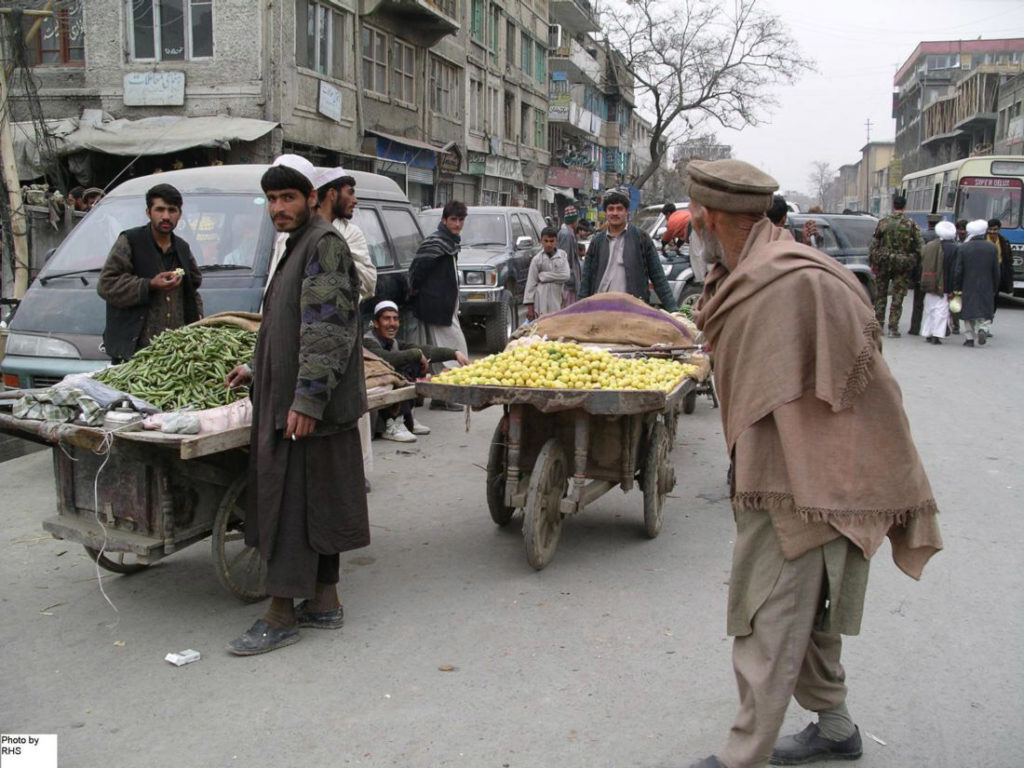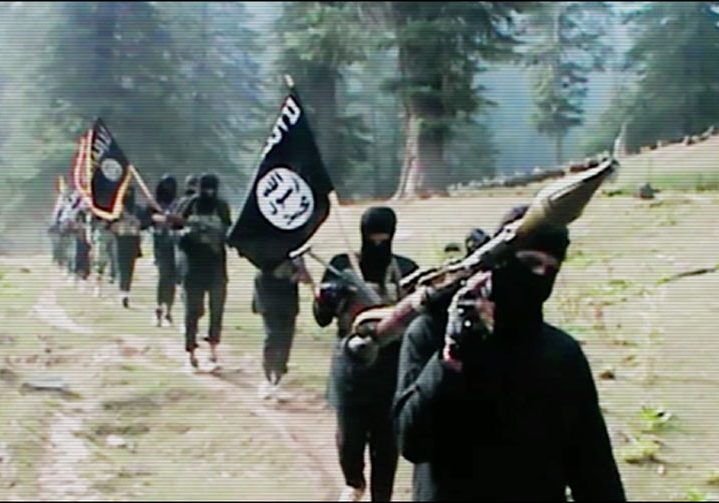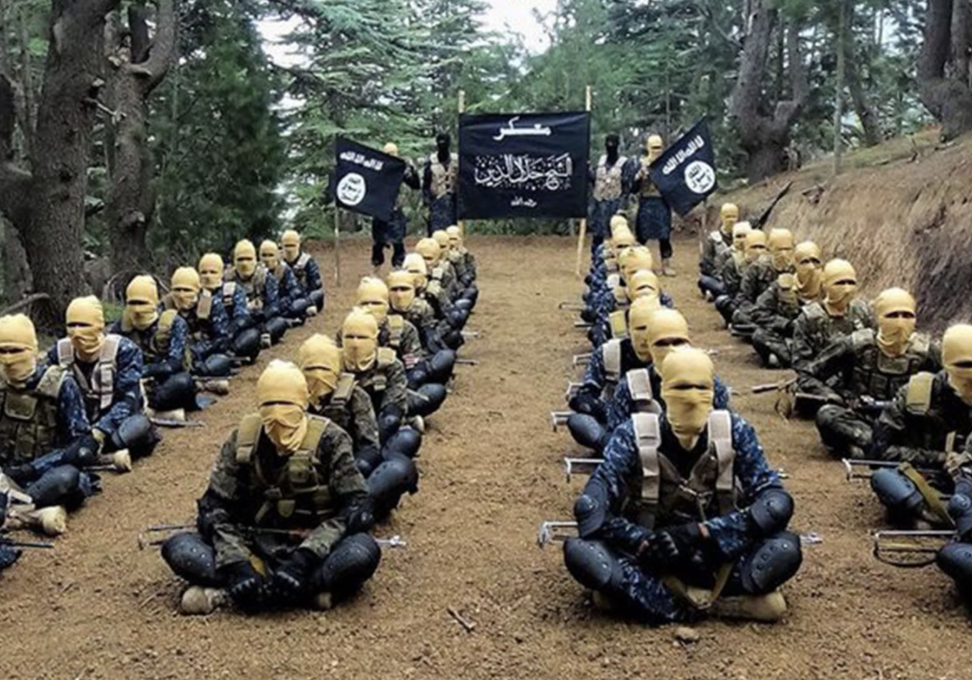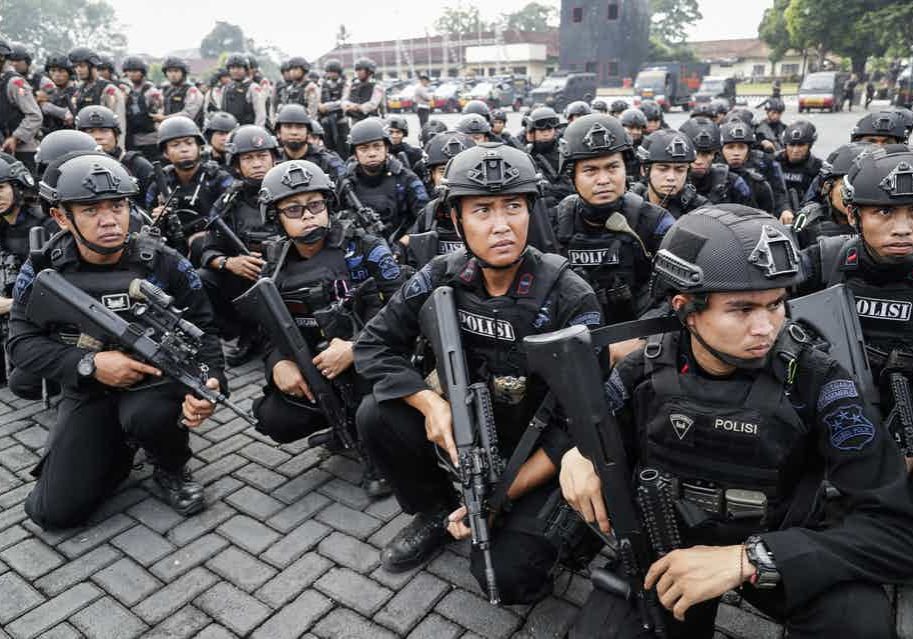Australia/Israel Review
Essay: The Crossroads
May 31, 2011 | Peter Bergen

Peter Bergen
The death of Osama bin Laden will raise the inevitable question: What are we still doing in Afghanistan? The answer, of course, is that the mission in Afghanistan is about something bigger and more ambitious than eliminating al-Qaeda’s leaders – most of whom, in any event, are probably living in Pakistan, as bin Laden was when the United States finally tracked him down. No, the mission in Afghanistan isn’t about killing al-Qaeda members. It’s about stabilising the country so that it can never again serve as the hotbed of extremism that it was until 2001, with all of the attendant national security and human rights problems that resulted.
But that in turn raises other questions: Is it worth prolonging a war that has stretched on for nearly ten years for that broader goal? And perhaps the most difficult question of all: Even if that goal is worth fighting for, is it actually achievable?
Over the past few years, a consensus has formed in Washington and elsewhere that the answer to that last question is a resounding “no”. The government in Kabul, we have been told, is corrupt and predatory. The Afghan army is a mess. Tribal loyalties trump national loyalties. The Taliban is gaining in strength.
All of this rendered a decision made by President Barack Obama last year rather odd – at least on the surface. Obama had long promised that American troops would begin leaving Afghanistan in mid-2011. As Vice President Joe Biden had explained: “In July 2011, you’re going to see a whole lot of people moving out. Bet on it.” But then, over the course of a week in November, the White House announced a major reversal of course: A large-scale troop presence would remain in Afghanistan for an additional three years, until 2014.
Only a handful of journalists seemed to realise the magnitude of the news.
But while Americans barely seemed to notice, people in Kabul certainly did. In December, a few weeks after Obama’s announcement, I met with Hedayat Amin Arsala, a courtly senior minister in the Afghan Government and a confidant of President Hamid Karzai. We were seated in a basketball-court-sized office adorned with a massive chandelier in a 19th century building in central Kabul. Arsala had been dismayed by Obama’s initial plan to begin withdrawing in 2011. “I was not very happy with it,” Arsala recalled, choosing his words carefully. “It gave the impression to the opposition that if they stick to their guns a little longer, they might be able to succeed after that.” Arsala, reflecting the views of many Afghans both inside and outside the government, expressed relief that Obama was now reversing himself. In fact, he hoped the American president would go even further, and hammer out a long-term agreement with Afghanistan so that American troops could remain in the country into 2015 and beyond.
Then came this month’s killing of Osama bin Laden – and while Americans rejoiced, many Afghans were, according to the Times, worried that the successful operation would hasten the departure of American troops. “This should not be used as a justification for premature withdrawal,” warned one former Afghan official.
What is going on here? First, Obama had concluded that a war which was widely believed to be failing was in fact still worth prosecuting. Then, Afghans had made it known that they were relieved the United States would be sticking around. Now, in the wake of bin Laden’s death, they were reminding the United States that they expected it not to renege on this promise. Is this a case of a stubborn American president – unwilling to admit defeat, egged on by Afghan allies – doubling down on a completely failed enterprise? Or is it possible that the Afghanistan war is actually succeeding?
Major Jim Gant of the Army Special Forces is a rangy, intense Pashto-speaker with tattoos of Chinese characters on his right arm. Like many of his fellow Special Forces officers in the field, Gant sports a shaggy beard and wears an Afghan scarf loosely wrapped around his neck. He has been at the forefront of an unlikely transformation in counterinsurgency tactics, so much so that he’s been nicknamed “Lawrence of Afghanistan.” Gant’s rise to prominence started in late 2009, when he published a paper on the website of Steven Pressfield, a novelist and military veteran. The article was called “One Tribe at a Time,” and it drew on Gant’s experiences as a Special Forces team leader working with a Pashtun tribe – the Taliban’s historical base is among the Pashtuns – in eastern Afghanistan in 2003. Based on his experiences, Gant advocated that small units of autonomous Special Forces embed with Pashtun tribes and train them to fight the Taliban.
Gant’s paper ricocheted around the upper echelons of the military. It even reached General David Petraeus, who called the paper “very impressive, so impressive, in fact, that I shared it widely.” After that, the Special Forces, known as the Green Berets, stepped back from “door-kicking” missions and instead began to advise and build up local forces. In what the US military has termed “Village Stability Operations”, members of the Special Forces now live among the Pashtun tribesmen in remote areas where insurgents once had unfettered freedom of movement. The goal is to help train community militias, known to the US military as Afghan Local Police (ALP). At present, the Government of Afghanistan has authorised 10,000 ALP militiamen; American officers believe that the number will eventually rise to something more like 24,000.
This December, at a base near Kabul, I bumped into Gant at a meeting with some senior Special Forces officers. Gant said he was pleased with the progress and noted that in the Pashtun language the community forces are known by the word Arbakai, a traditional term for forces that secure their own area. “The Taliban are very threatened by this,” Gant said. “It’s taking their safe haven away.” Other experts I spoke with affirmed that the community policemen have created “security bubbles” that didn’t exist before.
If Gant’s approach sounds familiar, it should. That’s because it draws on the same principles as the counterinsurgency tactics that worked for Petraeus in Iraq. Ultimately, the effort in Afghanistan will either succeed or fail based on the counterinsurgency practices, like Gant’s, that Petraeus has put in place.
Counterinsurgency is often misunderstood as being mostly about winning “hearts and minds”; and, as Gant’s program shows, there’s certainly an element of that. But, at the most basic level, it’s really a set of common sense precepts about how to avoid being hated while simultaneously applying well-calibrated doses of violence – that is, killing people.
As a result of stepped-up operations, many of the Taliban’s longtime safe havens in Helmand and Kandahar have been eliminated, according to the US military. Of course, the Pentagon has reason to give optimistic reports; but I was struck to see that the International Council on Security and Development, an organisation long critical of US policy in Afghanistan, is also echoing this assessment, based on its own on-the-ground research.
Meanwhile, operations by Delta Force and Navy Seals have decimated the ranks of mid-level Taliban commanders. This March, Petraeus told the Senate Armed Services Committee that, in a typical three-month period, 360 insurgent leaders were killed or captured. (According to a number of observers, the average age of Taliban commanders has dropped from 35 to 25 in the past year.)
Petraeus also appears to be making progress in standing up an effective Afghan National Army. Currently, the army is the most well-regarded institution in the country, with approval ratings over 80%. While Tajiks are overrepresented in the officer corps, and Pashtuns from the south of the country are grossly underrepresented among the rank and file, overall, the army is ethnically balanced, retention rates (while hardly stellar) are rising, pay rates went up two years ago to US$140 per month for a raw recruit (the average yearly income in Afghanistan is less than US$400), and the army is on track to reach its November 2011 end-strength goal of 171,000.
But will all these changes in military strategy actually lead to long-term victory in Afghanistan? Unfortunately, anyone observing the country learns to live with alternating feelings of hope and despair. As heartened as I often felt when seeing the military progress, I found the corruption of key Afghan politicians to be deeply depressing. More significantly, the war is exacting a steep cost in American lives. Since Obama took office, some 890 American soldiers have died in Afghanistan.
Most of the eastern provinces remain infested with insurgents, as do provinces near Kabul such as Ghazni. Data from Indicium Consulting shows that incidents involving insurgent IEDs, small arms fire, rocket, mortar, and suicide attacks have more than doubled in recent years, from around 8,000 in 2008 to more than 17,000 in 2010. Efforts at striking deals with the Taliban have led nowhere. The most promising discussions occurred last year between the Karzai Government and senior Taliban leader Mullah Akhtar Muhammad Mansour – except that “Mullah Mansour” turned out to be a crafty Quetta shopkeeper who had spun a good yarn about his Taliban credentials in order to make some quick money. Meanwhile, official meetings held between Afghan officials and Taliban representatives in places like the Maldives to discuss “reconciliation” have produced nothing. One sardonic Afghan official offered me a simple reason for why the parties had agreed to meet for negotiations. “Everybody wanted to go to the Maldives,” he said.
I found little solace in How Insurgencies End, a rigorous RAND study, published last year, of 89 insurgencies fought around the world since World War II. Insurgents who have enjoyed a sanctuary have won almost half the conflicts where there was a clear victor. In countries with less than 40% urbanisation, insurgents have won about three-quarters of the time. And pseudo-democracies, such as Afghanistan, have a particularly poor record of defeating insurgencies, because they neither have the stomach for total repression nor the capacity to offer accountable government. They lose about 85% of the time.
Then there is Pakistan, which has, to put it mildly, not always been a helpful player in Afghanistan. The Pakistani army has long sought a pliant Afghan state on its western border to balance its Indian neighbour to the east – a doctrine known as “strategic depth” – and it believes the Taliban served this purpose fairly well. Today, Pakistan’s economy is in bad shape: Its inflation rate hovers around 15%, and annual growth has fallen from 7% to 2%, which cannot remotely sustain what will be in 2015 the world’s fifth-largest population. Simultaneously, Pakistan is spending an astonishing 17% of its budget on defence. All of these indicators are bad news for Pakistanis, but they’re also bad news for Afghans: An unstable Pakistan means an unstable Afghanistan, since the border between the countries is basically ungovernable.
And yet, against this parade of depressing facts, one must balance some other realities. It helps to begin with some historical context. For all of Afghanistan’s problems, the country has come a long way. I first came to Kabul in 1993, when it was a patchwork of vicious ethnic militias fighting block-to-block, Mogadishu-style. I saw boys as young as ten fighting alongside the militiamen. Travel at night anywhere at all was out of the question, and brigands of all kinds roamed the countryside kidnapping and thieving at will. Hundreds of thousands of Afghans died, and even more fled the country.
I next visited the country in 1997, a year after the Taliban had seized power. The streets were now quiet, and all women were covered from head to foot. Fierce, black-turbaned Taliban “vice and virtue” enforcers roamed around the cities, enforcing their ordinances in fast-moving pickup trucks, stopping to harass, beat, or arrest men whose beards were of improper length or women whose feet were visible. There was nothing to do, no place to go. There were no sounds of music, no films, no entertainment. The economy was in free fall. Kabul was a ghost town, with only 500,000 inhabitants left. The rest had fled.
When I stayed in Kabul in the winter of 1999, I was the only guest in the only functioning hotel in town, an Intercontinental that had long ceased to have anything to do with the brand. There was no heat or hot water, nor were there any telephones. I was lucky to have one of the few rooms with windows that remained intact from the war. When I visited Taliban cabinet officials, we would sit shivering in unheated rooms in their ministries while they told me what a misunderstood man Osama bin Laden was.
Today, Kabul has three million inhabitants. There are restaurants and bars and social venues – and people are friendly. (Among journalists, the guilty secret is that working in Kabul today is sort of, well, fun.) A decade ago, 9% of Afghans had access to basic medical care. Today, 85% do. Under the Taliban, about one million kids (almost none of them girls) were in school, whereas now about seven million children are being educated (more than one-third of them girls). Before the US occupation, a telephone system barely existed in Afghanistan. Today, one in three Afghans has a cell phone. Afghans once had access to no media outlets apart from the Taliban’s Voice of Sharia radio network. Now there are, in the words of the BBC, “scores of radio stations, dozens of TV stations and some 100 active press titles.” More than five million Afghan refugees have returned home. Kabul has become so crowded with cars and people that the city’s pollution is statistically more lethal than the war.
Afghanistan’s economy is also booming. Thanks to the improvements in security provided by the United States and NATO, GDP growth between 2009 and 2010 was a strong 22%. That’s just the start. According to a thorough study released earlier this year by the Pentagon, an estimated US$900 billion worth of mineral deposits is waiting to be unearthed in Afghanistan, including enough lithium to make the country a world leader in raw materials for batteries. No wonder, then, that 70% of Afghans told pollsters for the BBC late last year that their country is now going in the right direction. It’s also why Afghans give surprisingly high marks to the US military, even after nearly a decade of often bungled occupation: 68% favourable, according to a BBC/ABC poll released in January 2010.
It’s true that overall security has deteriorated recently in Afghanistan, but much of that is due to stepped-up military operations. This is what happened at the start of the surge in Iraq. Afghanistan also remains a safer place than countries such as Russia or Mexico, where political conflict and criminal violence kill proportionately more people.
Even the unhappy RAND study on the success of insurgencies contained some encouraging findings. One of the most important is that when a government has a significant force superiority ratio (9:1 or greater), it “correlated strongly with success” in defeating insurgents. The projected end strength of the Afghan army and police is 375,000, and the Taliban is around one-tenth of this size. That’s not including all of the outside military forces that are also involved on the side of the Afghan government. What’s more, according to the RAND study, “[c]ontrary to conventional wisdom, insurgents do not win by trying to simply outlast the government. In fact, over the long run, governments tend to win more often than not.” While the long run can be all too long – it took more than four decades for the Colombian Government to effectively defeat the FARC – the fact remains that time is working against the insurgents.
Although the White House’s pledge to remain in Afghanistan appears to be firm, calls to pull out have been increasing. One striking example of the new emerging consensus came out earlier this year, when George W. Bush’s ambassador to India, Robert Blackwill, wrote in Foreign Affairs that “Washington should accept that the Taliban will inevitably control most of the Pashtun south and east”; he advocated de facto partition of Afghanistan as “the best available alternative to strategic defeat.”
Partition or withdrawal sound simple and alluring; but Blackwill and others don’t seem to fully grasp the problems with such proposals. For one thing, with whom would we negotiate a partition? The so-called “moderates” in the Taliban reconciled with the Afghan Government long ago. The remaining Taliban fighters have splintered into several groups, each more extreme than the next. And why would the Taliban honour their side of the bargain? Deals between the Pakistani Government and the Taliban in Waziristan and in Swat were merely preludes to the Taliban establishing brutal “emirates”, regrouping, and then moving into adjoining areas to seize more territory.
And, finally, there are the strategic costs. Yes, Osama bin Laden is dead, but al-Qaeda still exists, and there is no reason to believe that a reconstituted Taliban government would be any less hospitable to al-Qaeda than the Taliban rulers of the 1990s.
Of course, just because it would be preferable to succeed in Afghanistan does not mean we actually can. But, when I look at the hopeful signs that are starting to emerge from the country, and when I consider these indicators in tandem with the likely consequences of a hasty exit, I do think the wise choice now is to stay. In war, perceptions tend to lag behind reality by a considerable distance. In Afghanistan, our efforts were widely thought of as successful for several years after things had clearly begun to deteriorate on the ground. Today, it appears that we have the opposite problem: improvements on the ground that are widely dismissed amid a narrative of defeat.
Staying in Afghanistan isn’t the politically obvious decision: The war is going to remain controversial, and it’s going to be criticised from both the left and the right. Still, President Obama has made his choice and he appears to be sticking with it. This, I am convinced, is good for Afghanistan. One day, I hope, we’ll also realise that it was good for the United States and its allies.
Peter Bergen is the author of The Longest War: The Enduring Conflict Between America and Al-Qaeda. This article originally ran in the New Republic (www.tnr.com). © New Republic, reprinted by permission, all rights reserved.
Tags: Afghanistan/ Pakistan






